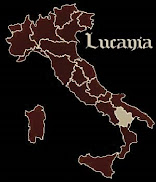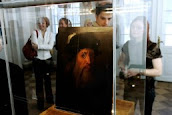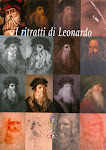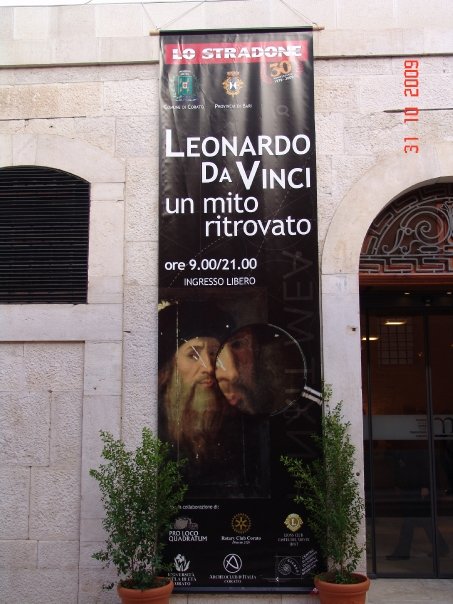-->
A portrait of Leonardo da Vinci has been found. The portrait, allegedly part of a Lucanian family’s private collection, originates from Lucania itself. This finding is connected with several years of research performed by Nicola Barbatelli, Gianni and Raffaello Glinni and Jacqueline Jarvis. Television director Fabio Tamburini relatively revealed clues of confraternities of Pythagorean doctrine in Lucania, who in the medieval epoch, were operating in that territory. But a difficulty arises given the fact that these confraternities never recorded anything; although it has achieved these considerable results. Discovery of a sacred geometry based on the pentagram was integrated into the construction of the Acerenza Cathedral in 1080, and the wooden figure of St. Bernard with an amputated head placed between his feet (in which “quatre de chiffre” is engraved); a noted symbol of cathedral constructors who are part of a confraternity. It is probable that Leonardo’s passion for sacred geometries had been initiated by Luca Pacioli, who coaxed and executed a voyage toward such lands that had witnessed the development and at the same time, the tragic end of the Pythagorean school. Lucanian Ippaso from Metaponto demonstrated in 500BC, the existence of the irrational number by way of studies on the pentacle and the “vesica piscis,” both reoccurring themes in the scientific and artistic research on Leonardo da Vinci. Leonardo’s presence in Lucania is confirmed by a chronicle of one of his voyages to Vallo of Lucania, also by the presence of a Florentine family in Acerenza, the Segni family, who according to Vasari, had reported their grand friendship with Leonardo.
This finding is of extraordinary scientific importance because it involves one of the only notable portraits of Leonardo. A deep study is currently in progress directed by one of the utmost experts in the world on Leonardo da Vinci; Professor Vezzosi, who will establish the dating. At the moment, from what current knowledge is held, the painting appears similar to the one hanging today in the Uffizi Museum in Florence Italy; one of optimum workmanship and probably a proceeding of the original painting found.
This finding is of extraordinary scientific importance because it involves one of the only notable portraits of Leonardo. A deep study is currently in progress directed by one of the utmost experts in the world on Leonardo da Vinci; Professor Vezzosi, who will establish the dating. At the moment, from what current knowledge is held, the painting appears similar to the one hanging today in the Uffizi Museum in Florence Italy; one of optimum workmanship and probably a proceeding of the original painting found.













No comments:
Post a Comment